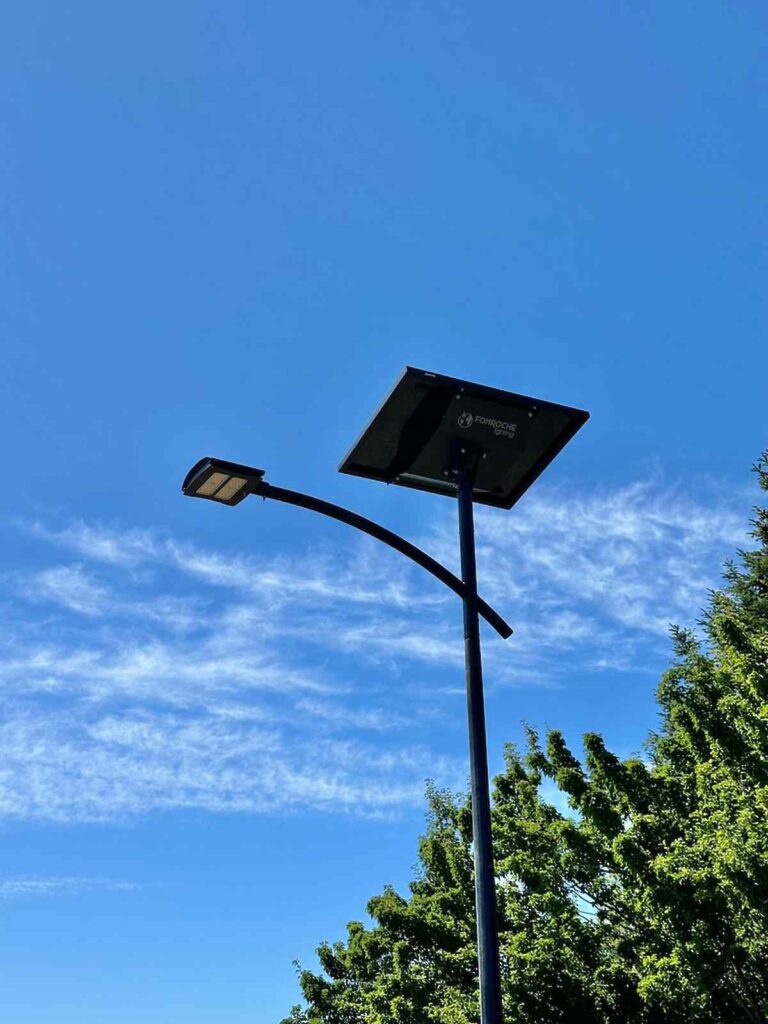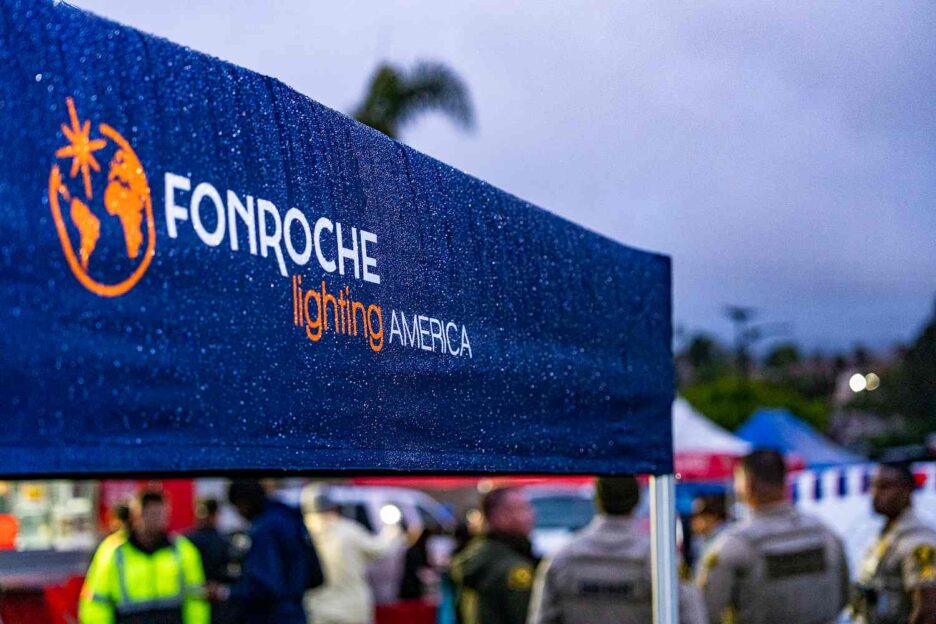Funding pathways to resilient, cost-saving, off-grid lighting across California.
Across California, municipalities, schools, and developers face the challenge of delivering safe, reliable infrastructure while balancing tight budgets and rising costs. Traditional streetlights not only require expensive trenching and wiring but are also vulnerable to PSPS shutoffs, wildfire damage, and ongoing utility bills.
Grant and financing programs offer a powerful solution. By tapping into California solar lighting grants along with other state, federal, and local opportunities, communities can deploy off-grid solar lighting that performs year-round, cuts operating costs, and strengthens resilience.By tapping into state, federal, and local funding opportunities, communities can deploy off-grid solar lighting that performs year-round, cuts operating costs, and strengthens resilience. This guide highlights the leading California solar lighting grants and walks through the step-by-step process to prepare strong applications and secure funding.
Step 1 – Choose the Right Grant Program
Not every funding opportunity is the right fit for every project. The key to success is matching your solar lighting goals with the most aligned grant or incentive program.
WRCOG Streetlight Program
- Western Riverside Council of Governments’ program helps cities and agencies retrofit existing streetlights with modern, energy-efficient systems. While traditionally focused on LED conversions, solar-integrated upgrades that improve safety and reduce long-term costs may qualify under broader modernisation scopes.
California Energy Commission (CEC) Funding Opportunities
- CEC offers a variety of funding through its EPIC and resilience programs for municipalities seeking to deploy clean energy technologies. Solar lighting that contributes to grid independence, climate adaptation, or community resilience is often eligible.
Prepare California (Cal OES)
- Cal OES administers pre-disaster hazard mitigation funding, prioritizing communities at risk of wildfires, earthquakes, and grid disruptions. Solar lighting for evacuation routes, critical facilities, or shelter access can be positioned as a resilience measure.
Listos California Grants
- Aimed at improving community preparedness for emergencies, Listos California supports initiatives that enhance public safety. Solar lighting for unlit paths, parks, or bus stops can qualify when tied to preparedness or outreach in vulnerable communities.
CAL FIRE Wildfire Prevention Grants
- These grants fund local efforts to prevent catastrophic wildfire impacts. Projects that improve safe evacuation or increase nighttime visibility, like solar-powered street and trail lighting, may be eligible, especially in WUI (wildland-urban interface) zones.
Safe Streets & Roads for All (California)
- This federal program, supported by the U.S. DOT and coordinated locally, funds roadway safety projects. Solar lighting improves visibility at intersections, crosswalks, and corridors, and is an effective safety intervention for vulnerable road users.
Step 2 – Collect Your Project Information
Strong grant applications begin with clear, well-organised project details. Funders want to see that your proposal is practical, cost-effective, and directly aligned with community needs.
Project Description
- Define the site, safety challenge, and intended outcome. Whether it’s lighting an evacuation corridor in a wildfire-prone zone or increasing nighttime visibility at a rural park-and-ride lot, clearly outline the who, where, and why.
Budget & Savings
- Provide a detailed cost breakdown, solar equipment, poles, installation, and emphasize avoided expenses like trenching, wiring, and electrical infrastructure. Highlight long-term savings from zero utility costs and minimal maintenance.
Community Impact
- Demonstrate how the project enhances public safety, improves walkability, or ensures continuity during outages. Funders prioritize applications that show tangible benefits, especially for underserved, high-risk, or disadvantaged areas.
Match Funding
- Most state and federal programs require a local contribution, typically 10–25% of the total project cost. This may include direct funding, in-kind contributions, or leveraged local grants. Identify and document your match early to avoid approval delays.
Tip:
- Measurable outcomes, like reduced nighttime accidents, uninterrupted lighting during PSPS events, or increased pedestrian access, can significantly boost your application’s competitiveness.
Step 3 – Complete the Application
Each program has a unique submission path. Understanding where and how to apply ensures your proposal is reviewed efficiently and on time.
WRCOG Streetlight Program
- Applications are submitted through the Western Riverside Council of Governments’ regional portal. Participating jurisdictions can work directly with WRCOG to scope and submit retrofit or modernisation projects.
California Energy Commission (CEC)
- Apply through the CEC’s online solicitation platform. Monitor open grant opportunities under programs like EPIC, resilience innovation, and local energy infrastructure. Applications typically require technical detail and emissions impact analysis.
Cal OES / Prepare California
- Submit hazard mitigation project proposals through the California Office of Emergency Services. Applications are timed to coincide with FEMA hazard mitigation grant cycles and require coordination with your local hazard mitigation officer.
Listos California
- Listos funds are distributed via local or community-based organizations. Partnering with nonprofits or public health agencies can strengthen your proposal’s community outreach and readiness component.
CAL FIRE Wildfire Prevention Grants
- Apply through the CAL FIRE Grants Management System. Funding windows typically open in Q1 or Q2 each year. Projects must show how they reduce wildfire risk or improve evacuation preparedness.
Safe Streets & Roads for All (SS4A)
- Submit your application through your local Metropolitan Planning Organization (MPO) or via Caltrans if you’re a smaller municipality. Applications should clearly connect your lighting project to reduce roadway injuries and fatalities.
Tip: Partnering with a vendor like Fonroche Lighting America that provides photometric layouts, spec sheets, and BCA support can help streamline your submission and meet technical requirements.

Step 4 – Plan for Follow-Up
Applying is just the beginning. Most California and federal grant programs require ongoing oversight and documentation to ensure accountability and impact.
Provide Extra Documentation
- Be prepared to submit supplemental materials, site maps, lighting simulations, updated budgets, or engineering drawings, as agencies review your proposal or request clarifications.
Track Receipts and Performance
- Keep organised records of equipment purchases, installation, and operational metrics. Solar lighting projects should report uptime, outages avoided, and maintenance frequency to demonstrate real-world resilience and cost savings.
Submit Progress Reports for Compliance
- Agencies like Cal OES, FEMA, and HUD typically require quarterly or milestone-based reporting. These reports should include financials, site photos, project milestones, and community outcomes (e.g., safer crossings, uninterrupted lighting during outages).
Tip:
- Treat post-award reporting as an opportunity to build long-term credibility with funders. Strong follow-through not only satisfies current grant requirements but positions your organization for future funding cycles.
Why Solar Lighting Fits California’s Grant Priorities
Solar lighting aligns seamlessly with California’s evolving infrastructure priorities. As climate-driven disruptions intensify, resilience is no longer optional; it’s essential. Off-grid solar streetlights provide uninterrupted service during Public Safety Power Shutoffs (PSPS), wildfires, and other grid failures, ensuring continuous illumination for evacuation routes, shelters, and public spaces. Beyond resilience, solar lighting improves community safety, especially in high-risk or underserved areas where traditional infrastructure is lacking. It eliminates trenching and electrical connection costs, significantly reducing upfront capital investment, and cuts long-term expenses by avoiding utility bills and ongoing maintenance. Critically, solar lighting supports California’s climate action plan and carbon reduction mandates while promoting equity by extending reliable lighting to disadvantaged and rural communities. In short, it’s not just eligible, it’s exemplary.
Your Path to Funded Solar Lighting in California
California’s grant landscape is opening the door to smarter, safer, and more resilient infrastructure, and solar lighting is leading the way. With programs that support clean energy, wildfire preparedness, and transportation safety, adopting off-grid lighting is more achievable than ever. Fonroche Lighting America provides grant-ready systems engineered for fire zones, outages, and long-term performance, ensuring 365 nights of guaranteed illumination without the grid.

